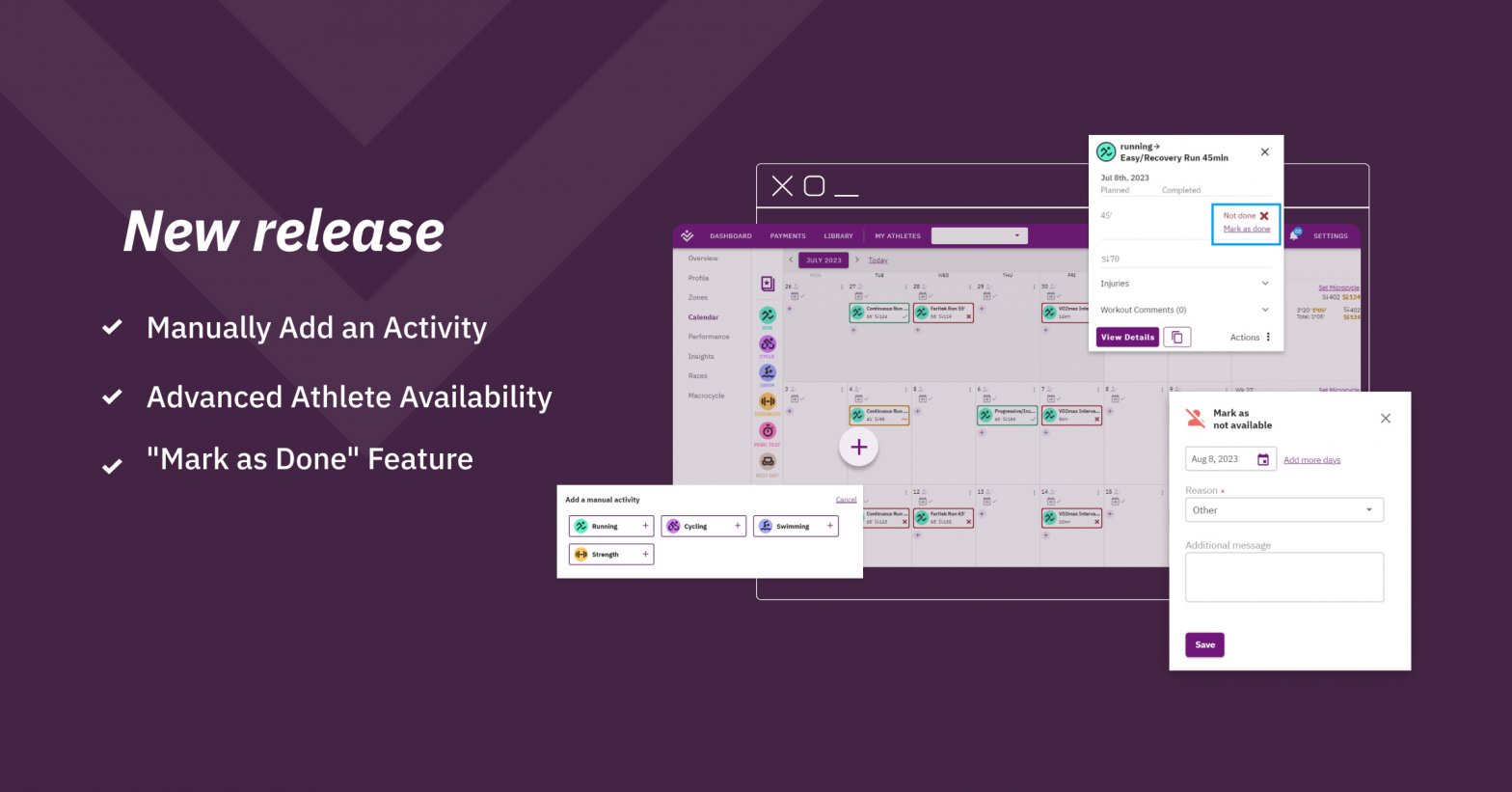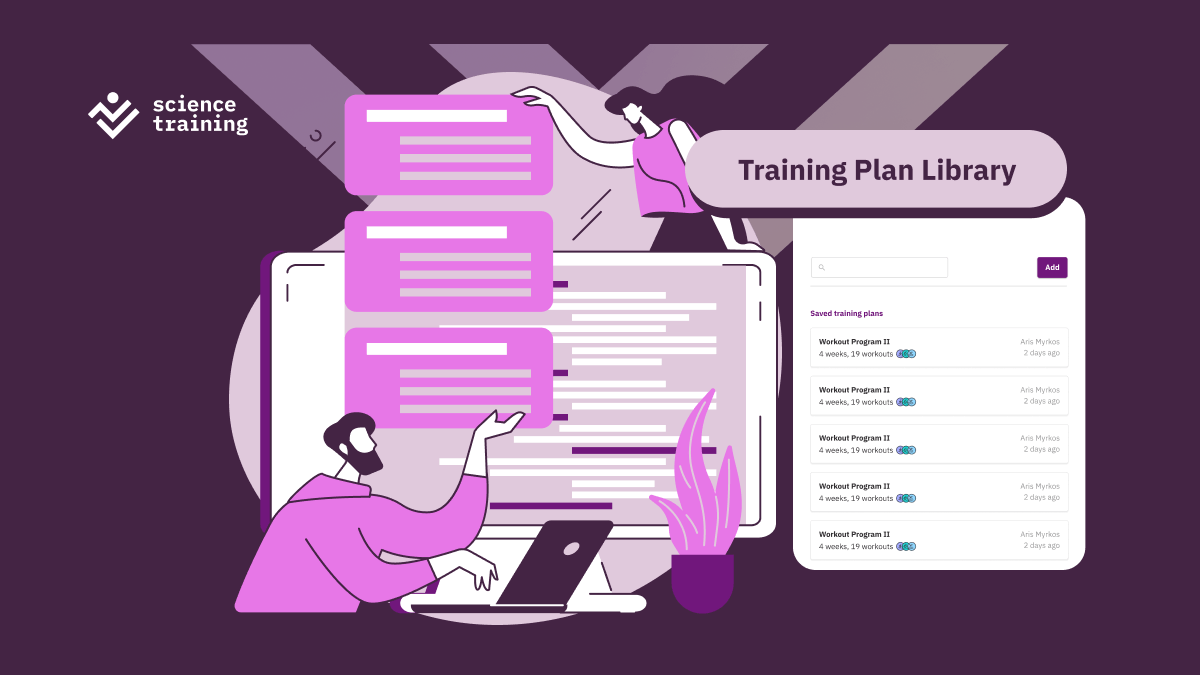Once considered suitable for elite athletes exclusively, today, triathlons have become very popular among athletes of all levels. That being the case, athletes who have competed in one or more Sprint triathlons, often wish to test their abilities in the Full-Distance race, as well. However, jumping from Sprint to Full-Distance is easier said than done. To compete in the latter, the athlete needs to commit to a personalized bridge training program; one that will help make the transition towards this demanding race both safe and successful.
What is Bridge Training?
Bridge training is the type of training that includes the evaluation of an athlete’s behavior and training patterns to help determine the proper modifications to their training program, in preparing them for a transition from one level of training intensity to the next. It’s traditionally supervised by a certified coach. The coach will help avoid injuries, undertraining or overtraining syndromes and demotivation. To understand its usefulness, one must first understand the differences between successive levels of training intensity, such as the Sprint triathlon and the Full-distance triathlon.
A triathlon distances overview: From Sprint to Full-Distance
As most athletes already know, there are many triathlon races, and the Sprint is only the second in line, in terms of distance. That goes to say, considering that the Full-Distance triathlon is the most challenging of all the triathlon distances, it is not usually recommended for beginners; in contrast to the Sprint, which is more approachable for new triathletes. To get an idea, the triathlon distances from Sprint to Full-Distance are as follows:
Sprint Triathlon
- Swim: 750 m / 0.46 mi
- Bike: 20 km / 12.5 mi
- Run: 5 km / 3.1 mi
Olympic Triathlon
- Swim: 1.5 km / 0.93 mi
- Bike: 40 km / 24.8 mi
- Run: 10 km / 6.2 mi
Middle Distance Triathlon / Triathlon 70.3
- Swim: 1.9 km / 1.2 mi
- Bike: 90 km / 56 mi
- Run: 21.1 km / 13.1 mi
Full Distance Triathlon
- Swim: 3.8 km / 2.4 mi
- Bike: 180.2 km / 112 mi
- Run: 42.2 km / 26.2 mi (a full Μarathon race)
Typical training plans for Sprint and Full-Distance triathlons
A typical training plan for the Sprint triathlon
Although the Sprint triathlon is a great choice for athletes who are just starting their triathlon journey, it doesn’t mean it’s an easy competition. Quite the opposite; it is a demanding race, where even experienced triathletes participate, raising the bar even higher. Be that as it may, this triathlon distance doesn’t require many hours of training, compared to the other triathlons.
In general, the athlete has to train in all three sports, for about 3-4 months before the race; with their weekly training program consisting of 60-90 min of swimming, 90-180 min of cycling, and 60-120 min of running. This, of course, depends on the athlete’s fitness level and available time for training. As to the swimming leg, it’s important to execute the swim workouts in the sea too, not just in the pool; to simulate the conditions of the race. Additionally, the athlete needs to implement in their training program:
A typical training plan for Full-Distance Triathlon
When preparing for such a demanding race, it is essential to create a macrocycle first; to help improve performance, while avoiding injuries and overtraining syndromes. The macrocycle should approximately last 24-48 weeks and should be divided into well-defined training phases. To elaborate, when applying the traditional periodization model, a typical Full-Distance triathlon training plan includes the following phases:
1. Preparation phase
This phase, lasting 2-8 weeks, is where the athlete sets their preparation period in motion. It consists of workouts without much intensity or structure, to slowly prepare both body and mind for the next phases of the training.
2. Base phase
The base phase lasts 9-16 weeks, and the athlete gradually develops an aerobic base by executing long, low-intensity, workouts; especially at Zone 2 (easy-moderate intensity).
3. Build phase
During this phase of 6-12 weeks, the athlete executes more intensive workouts in Zone 2, to build stamina at race pace, and improve their VO2max. Necessary workouts for this phase include, among others, HIIT, Tempo training, and FTP/Threshold workouts.
4. Peak phase
In the peak phase, for 2-4 consecutive weeks, the athlete executes workouts at a higher intensity and with a greater training load than in the build phase.
5. Tapering
The last phase of the macrocycle, which usually lasts 1-3 weeks, is about reducing the training load, to give the body a chance to recover from the previous training phases; and mentally prepare for the race.
Sprint vs Full-distance — differences in training
As one can gather, the differences between the aforementioned training programs are significant. The main difference is the total training volume, and total time per week the athlete has to dedicate to training. To explain, the Sprint does not require much training load, therefore, not much time for training. In contrast to the Full-Distance triathlon that demands a high training volume (especially in the peak phase); hence, many hours of training, per week. This is, of course, the main reason why Sprint is recommended for beginner triathletes.
What’s more, the training plan for the Full-Distance triathlon is based on training in Zone 2; whereas, the training plan for the Sprint triathlon focuses more on high-intensity interval training; which, as mentioned, is one of the key workouts in the weekly program. Moreover, unlike the Full-Distance race, where a strategy for nutrition and hydration is imperative, the Sprint triathlon does not require one; although, it would be wise to follow a personalized nutrition program, for health and wellness reasons.
All things considered, the transition from the Sprint to the Full-Distance triathlon needs to be gradual; and, that’s where bridge training comes into the picture.
Bridge training, done right — Transitioning from Sprint to Full-Distance
Practically speaking, bridge training is nothing more than gradual adjustments to the training program; that is, to prepare both body and mind for the long and hard mileage of the Full-Distance triathlon. To successfully ‘cross the bridge’ from the Sprint over to the Full-Distance race, naturally, the athlete needs to train in all three sports.
Long-distance swim
When it comes to the swimming leg, the athlete has to slowly adjust their swimming training load, so that they’re comfortable swimming 3.8 km / 2.4 mi; and even further ahead. The idea here is to increase endurance and prepare for open water race conditions. To explain, if on the day of the race there’s a strong current, the athlete will unavoidably drift, so they have to swim more. That’s why it’s always a good idea to execute swim drills in the sea or the ocean, and not solely in a pool.
Other than that, the athlete needs to synchronize their kicking with breathing, to minimize fatigue. If anything, kicking properly, not only helps swim faster, but also increases the economy of movement.
Long-distance rides
In like manner, the athlete needs to gradually increase their bike training volume, in tandem with the rest of the components of their training; and, also, practice cycling on rolling terrain, to learn the ropes of shifting gears. For instance, when cycling up a hill, the athlete will have to shift into an easier gear to reduce resistance; and make it up the hill, without spending more energy than necessary. Otherwise, they will wear down their legs, tire themselves up, and they won’t perform well on the running part of the race.
Long-distance runs
Being the last leg in the Full-Distance race, running is the hardest part for most triathletes; let alone first-timers to this challenging distance. Besides the long distance, the athlete is already tired from the two previous legs. Nonetheless, if they train right, they will manage to cross the finish line successfully.
Apart from adjusting the running training load, to get used to the full-distance, incorporating brick workouts will greatly help the athlete get the hang of transitioning, from cycling to running. As most triathletes know, the bike-to-run is the hardest transition in a triathlon race, as the legs get wobbly after spending hours on the bike. That said, the more the athlete practices bike-to-run bricks, the more they prepare their body to make an efficient transition.
Preparing for the transition area
Apart from implementing brick workouts in the training plan, the athlete needs to prepare for the transition area as well; that is, during their bridge training period. Indeed, it is not uncommon for triathletes to leave important equipment or gear behind, when changing for the next leg. So there are definitely a few things the athlete should know, and a few they should avoid, when in the transition area.
In addition, it might prove to be helpful for the athlete to set up a mini transition area of their own, as part of their training. Just to familiarize themselves with changing from one sport to the other, while tired; and also create a routine of movements to ‘automate’ the process, while making sure that nothing important is left behind.
Important underlying aspects of a training plan
When bridging from a Sprint triathlon over to a Full-Distance triathlon training routine, the athlete should consider three important underlying aspects; which, at the end of the day, make or break a training plan — and, with it, the athlete’s performance. These, of course, are no other than:
1. Consistency
A well-structured training program will certainly improve the athlete’s performance; however, consistency is the key to overall success. Consistency in training goes a long way towards maximizing aerobic fitness. Omitting workouts — or, worse, whole days of training — can cause detraining. Physiologically speaking, this means that the athlete’s body won’t be able to adapt to the training stimuli properly. Consequently, they won’t be able to progress as they initially expected, and they will end up feeling discouraged; with everything that entails.
2. Recovery
Rest and recovery days play a catalytic role in increasing performance and, thus, making an endurance training program effective. All in all, recovery prevents both physical and mental fatigue. When integrated well into the training routine, recovery days help the athlete’s body adapt to training stimuli; while, reducing the risk of injury and overtraining syndromes.
3. Mental stamina
As it often happens, athletes tend to focus more on their body and how they can improve physiologically, leaving the psychological part of their training out of the picture. As a result, they struggle with intrinsic motivation issues, due to a lack of mental resilience. In all truthfulness, a mentally untrained athlete cannot perform well in the Full-Distance triathlon. Strengthening the mind is as important as strengthening the body, if not more. With this in mind, the athlete has to set realistic goals, and keep an overall positive, can-do attitude. They also have to push themselves forward, and never give up — as good sportsmanship dictates.
TL;DR
Deciding to compete in the Full-Distance triathlon, after competing in a few Sprint triathlons, is an ambitious plan for a novice triathlete. However, it is reachable, as long as the athlete is committed to completing a holistic bridge training program; ideally, designed and personalized to the athlete’s needs and goals by a professional endurance coach. If anything, collaborating with a coach will greatly help the athlete carry through with the requirements of this challenging race, both physiologically and psychologically.
Finally, every new triathlete should also keep in mind that 6-12 months of training is expected, in order to prepare well for the Full-Distance. In the long run, it would also help to participate in less demanding races first, such as intermediate B priority races (eg., the Half-Distance Triathlon), before signing up for the Full-Distance.


